Complete Solutions to dpp 42 of chapter DAILY PRACTICE PROBLEMS of Class 11 book with complete answers and questions
| Class 11 | PHYSICS |
| Chapter | DAILY PRACTICE PROBLEMS |
| RESONANCE | dpp 42 |
| Number Of Questions | 7 |
| Academic Year | 2023-24 |
A block of mass m starts at rest at height on a frictionless inclined plane. The block slides down the plane, travels across a rough horizontal surface with coefficient of kinetic friction `mu` and compresses a spring with force constant `k` a distance `x` before momentarilly coming to rest. Then the spring extends and the block travels back across the rough surface, sliding up the plane. The block travels a total distance d on rough horizontal surface. The correct experssion for the maximum height h' that the block reaches on its return is :

View SolutionIn figure, the ball A is released from rest, when the spring is at its natural (unstretched) length. For the block B of mass M to leave contact with ground at some stage, the minimum mass of A must be
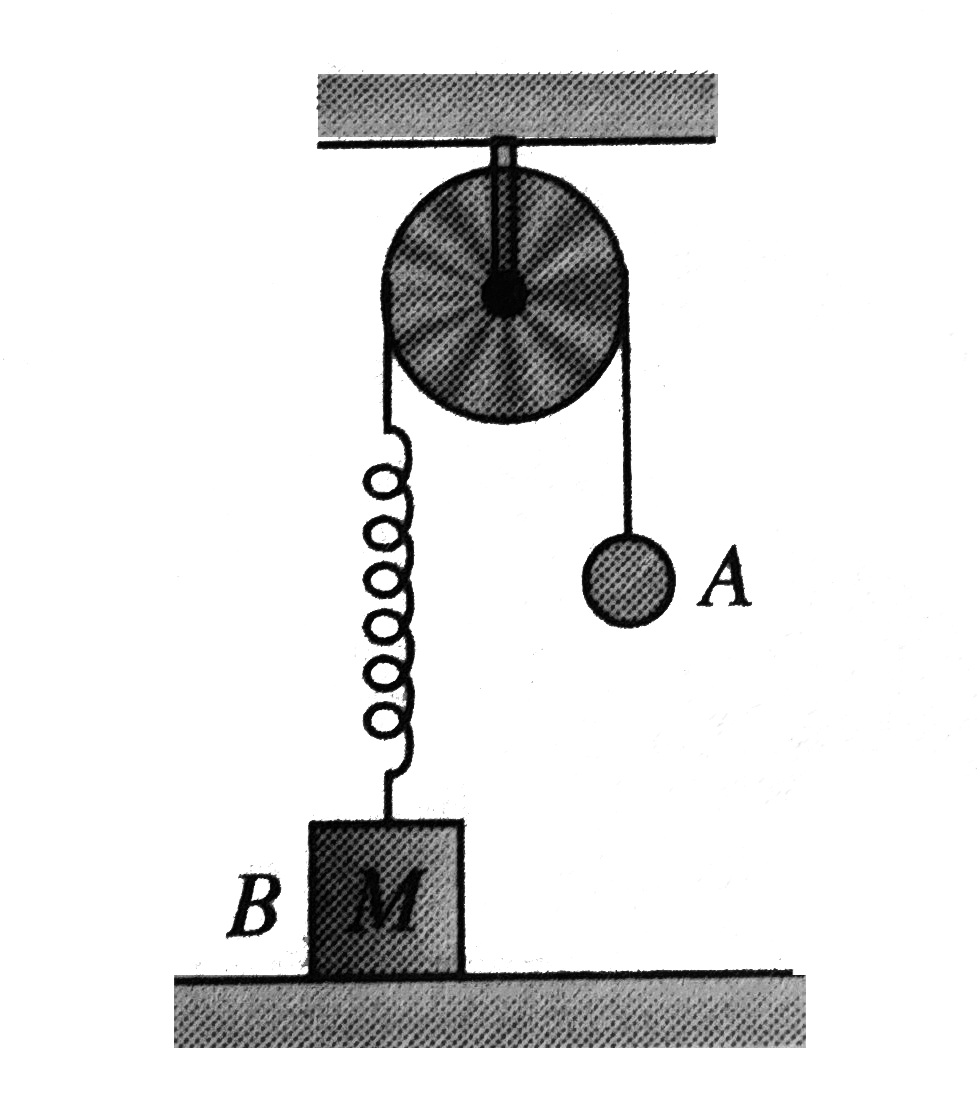
View SolutionA particle is moving in a circle of radius `r` with speed `v` as shown in the figure. The magnitude of change in velocity in moving from `P` to `Q` is
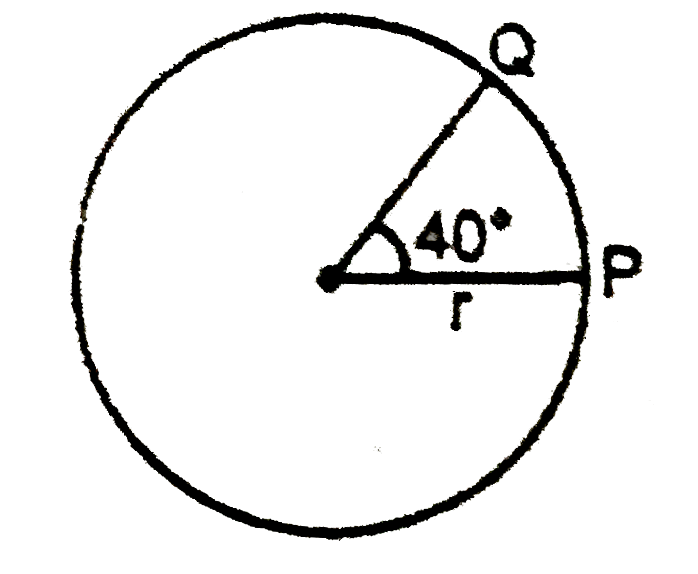
View SolutionThe potential energy function associated with the force `vecF=4xyhati+2x^2hatj` is
View SolutionA disc of radius `R` has a light pole fixed perpendicular to the disc at its periphery which in turn has a pendulum of length `R` attached to its other end as shown in figure. The disc is rotated with a constant angular velocity `omega` The string is making an angle `45^(@)` with the rod. Then the angular velocity `omega` of disc is
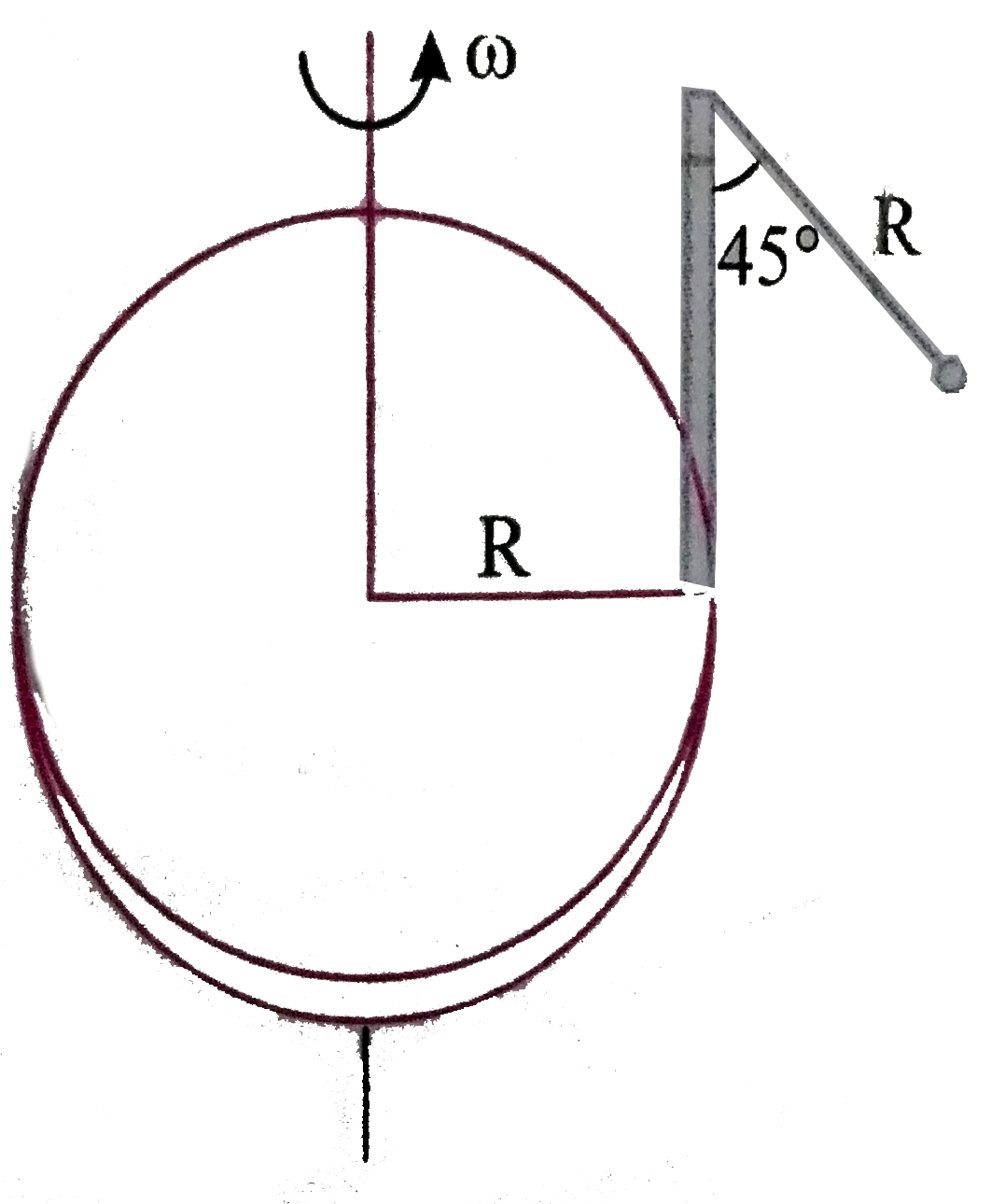
View SolutionTwo blocks of masses `m_(1)` and `m_(2)` are placed in contact with each other on a horizontal platform as shown in figure The coefficient of friction between `m_(1)` and platform is `2mu` and that between block `m_(2)` and platform is `mu`.The platform moves with an acceleration `a` . The normal reaction between the blocks is
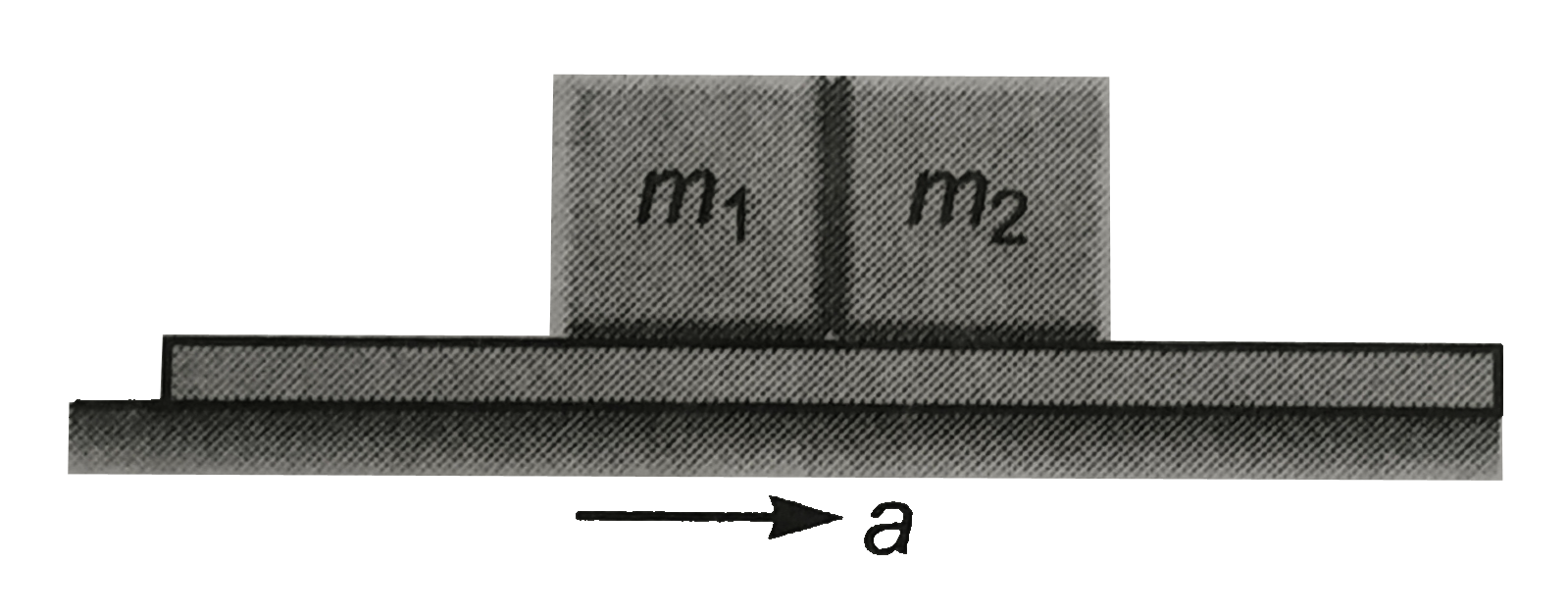
View SolutionA car initially travelling eastwards turns noth by travelling in a quarter circular path of radius `R` metres at uniform speed as shown in figure. The car completes the turn in `T` second.
`(a)` What is the acceleration of the car when it is at `B` located at an angle of `37^(@)`. Express your a swers in terms of unit vectors `hat(i)` and `hat(j)`.
`(b)` The magnitude of car's average acceleration during `T` second period.
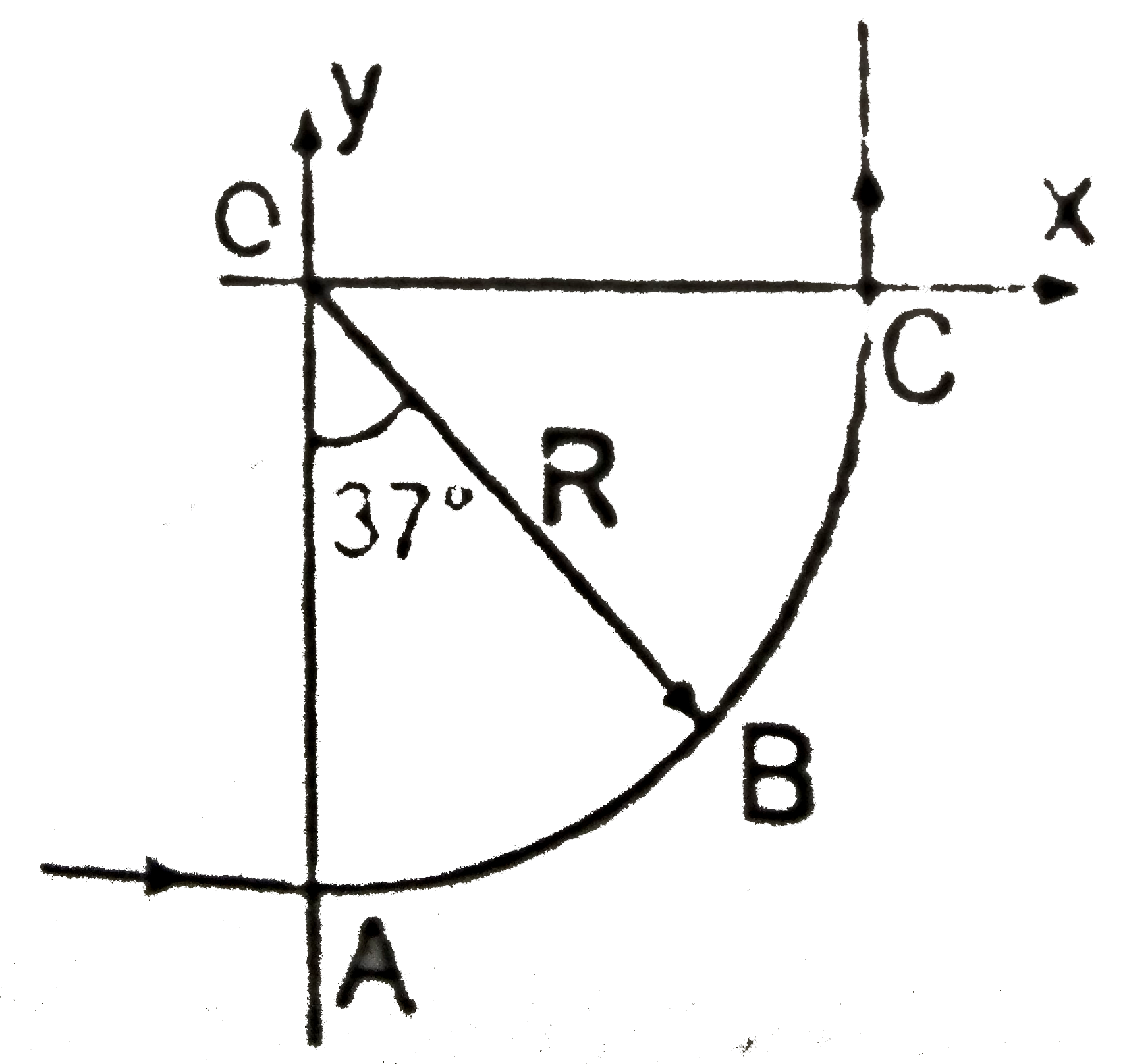
View Solution
dpp 42 questions and complete solutions for chapter DAILY PRACTICE PROBLEMS of RESONANCE ENGLISH of Class 11
All Exercises from RESONANCE Class 11 PHYSICS DAILY PRACTICE PROBLEMS
- comprehension
- Compreshension
- dpp 15
- dpp 16 physics
- dpp 17
- dpp 18
- dpp 19
- dpp 2 PHYSICS
- dpp 20
- dpp 21
- dpp 22.
- dpp 24
- dpp 25
- dpp 26
- dpp 27
- dpp 28
- dpp 30
- dpp 31
- dpp 32
- dpp 33
- dpp 34
- DPP 35
- dpp 36
- Dpp 37
- dpp 38
- dpp 39
- dpp 40
- dpp 41
- dpp 42
- dpp 43
- dpp 44
- DPP 45
- dpp 46
- dpp 47
- dpp 48
- dpp 49
- DPP 50
- dpp 51
- dpp 52
- dpp 53
- dpp 54
- DPP 55
- dpp 56
- dpp 57
- dpp 58
- dpp 59
- dpp 60
- DPP 62
- dpp 63
- dpp 64
- DPP 65
- dpp 66
- dpp 67
- dpp 68
- dpp 69
- dpp 70
- dpp 71
- dpp 72
- dpp 74
- dpp 75
- dpp 76
- DPP 77
- dpp 78
- dpp 79
- DPP 8 PHYSICS
- dpp 80
- dpp 81
- dpp 82
- dpp 83
- dpp 84
- dpp 85
- dpp 86
- dpp 87
- dpp 88
- dpp 89 illustration
- dpp 90 Illustration
- dpp 91 illustration
- dpp 92 illustration
- Dpp no 10 physics
- Dpp no 11 physics
- Dpp no 12 Physics
- Dpp no 6 physics
- DPP NO 7 PHYSICS
- DPP no 9 physics
- Dpp no. 13 physics
- DPP NO. 14 PHYSICS
- DPP NO. 5 Physics
- dpp23
- dpp29
- dpp61
- dpp73
- Now answer the following :
- PHYSICS
- TRUE/FALSE